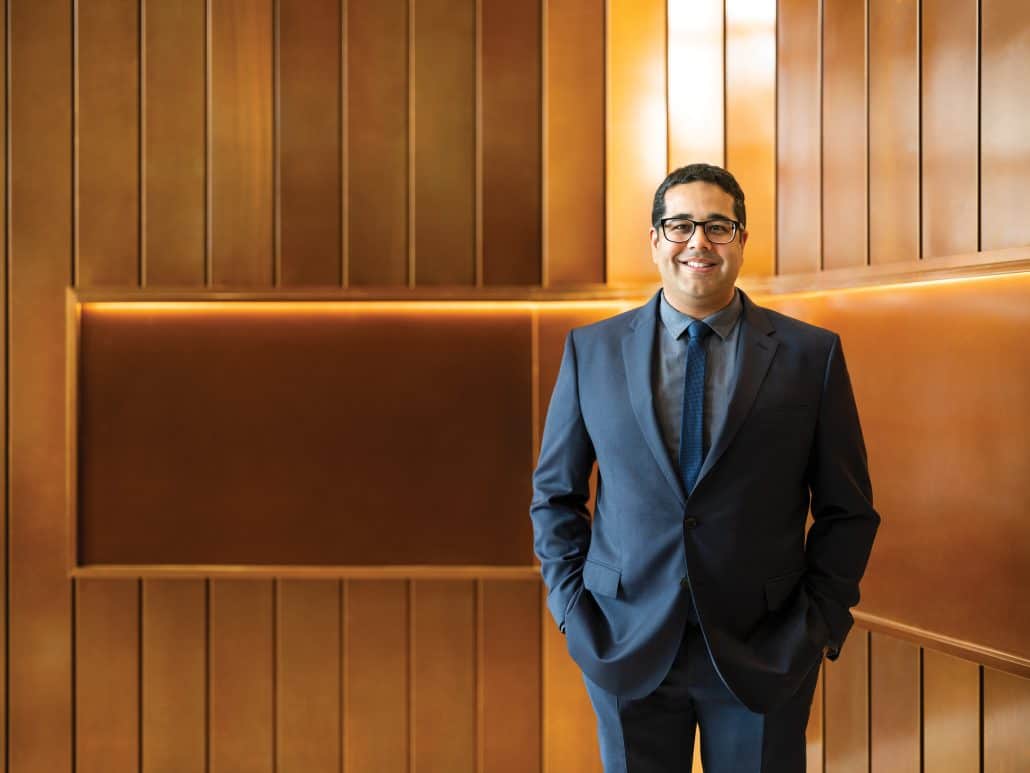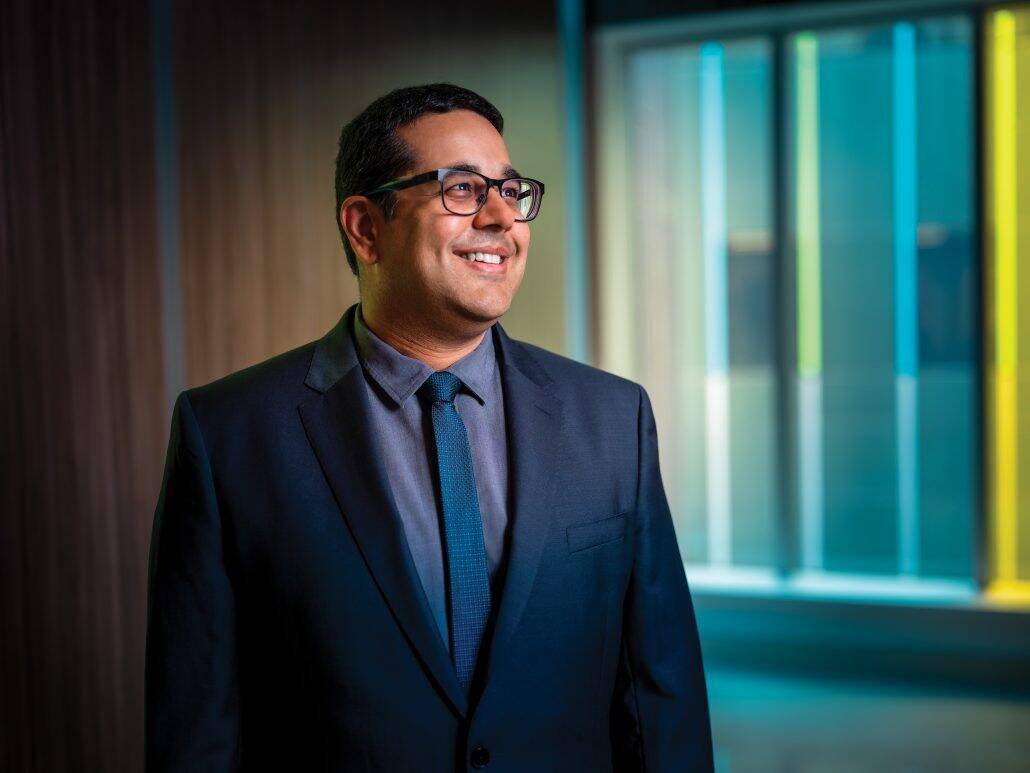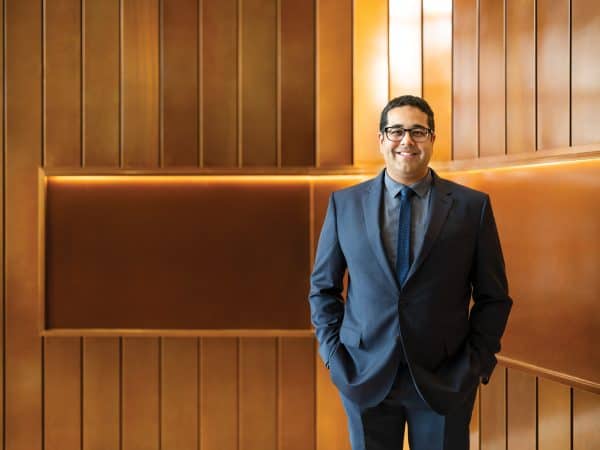Dr. Omar Khan uses data and analytics to inform and improve cancer care.
By Debby Waldman
Photographs by Jason Dziver

Early in his career as a medical oncologist, Dr. Omar Khan knew that artificial intelligence was going to be a game changer in health care — he just didn’t know how. Neither did his fellowship supervisor, Dr. Sunil Verma (who was then the medical director of the former Tom Baker Cancer Centre), but he recognized Khan’s passion and fascination with technology.
“Maybe this is where you need to focus,” Verma suggested, setting Khan on his current path, leveraging data to transform cancer care and research.
A specialist who treats patients with breast cancer and sarcoma at the Arthur J.E. Child Comprehensive Cancer Centre (Arthur Child) in Calgary, Khan incorporates data-driven insights into all aspects of his practice. This includes working on projects such as PROgress Tracker (an initiative of Breast Cancer Canada collecting patient-reported outcome data across the country) as well as a metastatic breast cancer database in Alberta. He is the provincial tumour team lead for sarcoma, and a member of the Integrated Sarcoma Research Program (iSARP) at the University of Calgary.
A living data lab.
Earlier this year, Khan was named a site medical informatics lead for Connect Care, Alberta’s province-wide medical records system. That role complements the work he is doing with the Acute Assessment Unit (AAU) at the Arthur Child. Both positions provide him with the opportunity to collect and analyze even more data.
The AAU, a first-of-its-kind in Alberta, opened in February 2025 with a mission to provide timely outpatient assessments for Albertans living with cancer experiencing acute symptoms. The goal is to improve the patient experience while reducing the burden on overstretched hospital emergency departments. More than 200 patients were referred and seen within its first three months, seeking treatment for everything from fevers to rashes.

Khan sees the AAU as having the potential to be a living data lab, generating information about a variety of factors, including why cancer patients seek acute care, the tests they need, treatments they receive and length of a visit. He and his research team can use that information to develop computer models to analyze the data, then use the results to inform care.
“If we can track trends in why patients are needing the AAU and what treatments they are on, we can help individual oncologists take preventative actions to reduce the symptoms in the first place,” he says. “That’s where the data can hopefully help us to effect change throughout the whole cancer system in addition to just keeping people out of the emergency room.”
Using AI to better understand tumours.
Another focus of Khan’s research, independent of his work with Connect Care and the AAU, involves using neural networks, a form of AI, to analyze imaging biomarkers from CT scans to better understand how tumours behave.
Over the past five years, using scans from Alberta lung cancer patients — one of the largest data sets available — Khan and his colleagues have designed algorithms to analyze over 5,000 variables, including information about different cancers (such as tumour size or number of lesions) and patients (such as fat and muscle content).
CT scans capture hundreds of “slices” or images. Radiologists use them to understand a patient’s disease. However, a lot of additional information that may be hard or time-consuming to measure is often not included in radiologist reports.
“Those things might be really important in terms of understanding how long somebody might be able to survive, just as important potentially as whether the tumour is getting bigger or smaller, but the relationship between these variables is often non-linear and harder to understand,” Khan says.
That’s where the neural networks come in: they can process large volumes of data and complex relationships between variables more quickly and effectively than a human brain, often in hours or minutes. “The idea is that if we can provide a better understanding of what a patient’s disease trajectory might be, we can tailor treatment options for that patient much better,” Khan says.
Developing AI models that are accurate and protect patient confidentiality is time consuming, taking years for Khan and his team. It’s one of the ironies in what is often seen as a fast-changing field: parts of it move much more slowly than people may realize. There’s a very good reason for that, Khan emphasizes — when you’re using health care data, it’s more important to be careful than speedy.
That’s why he’s not rushing his research into practice. “There’s a lot of steps in the process to make sure we do this in a safe way, to protect our patients,” he says. “It’s not something I’m using in the clinic today, but I think in the next five to 10 years, we’re probably going to see it a lot more. It really is a game changer.”

